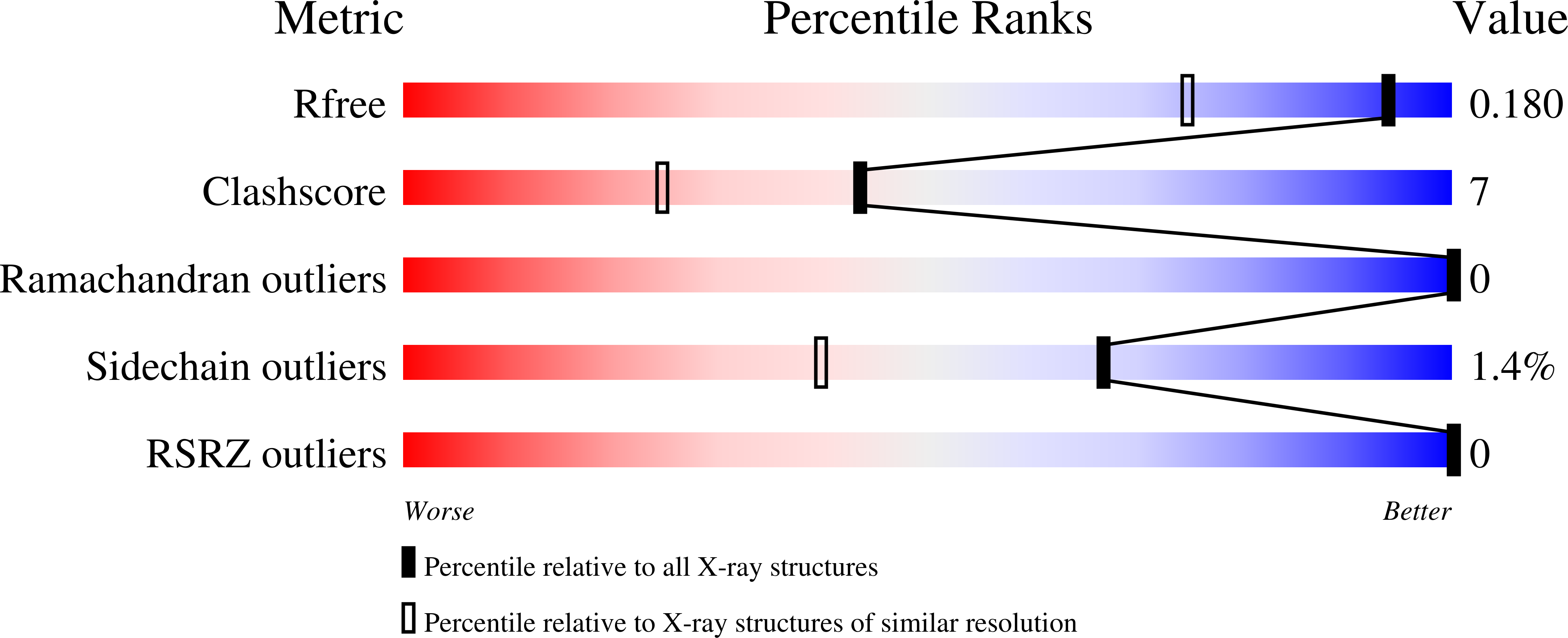The crystal structure of chorismate lyase shows a new fold and a tightly retained product.
Gallagher, D.T., Mayhew, M., Holden, M.J., Howard, A., Kim, K.J., Vilker, V.L.(2001) Proteins 44: 304-311
- PubMed: 11455603
- DOI: https://doi.org/10.1002/prot.1095
- Primary Citation of Related Structures:
1FW9, 1G1B, 1G81 - PubMed Abstract:
The enzyme chorismate lyase (CL) catalyzes the removal of pyruvate from chorismate to produce 4-hydroxy benzoate (4HB) for the ubiquinone pathway. In Escherichia coli, CL is monomeric, with 164 residues. We have determined the structure of the CL product complex by crystallographic heavy-atom methods and report the structure at 1.4-A resolution for a fully active double Cys-to-Ser mutant and at 2.0-A resolution for the wild-type. The fold involves a 6-stranded antiparallel beta-sheet with no spanning helices and novel connectivity. The product is bound internally, adjacent to the sheet, with its polar groups coordinated by two main-chain amides and by the buried side-chains of Arg 76 and Glu 155. The 4HB is completely sequestered from solvent in a largely hydrophobic environment behind two helix-turn-helix loops. The extensive product binding that is observed is consistent with biochemical measurements of slow product release and 10-fold stronger binding of product than substrate. Substrate binding and kinetically rate-limiting product release apparently require the rearrangement of these active-site-covering loops. Implications for the biological function of the high product binding are considered in light of the unique cellular role of 4HB, which is produced by cytoplasmic CL but is used by the membrane-bound enzyme 4HB octaprenyltransferase.
Organizational Affiliation:
National Institute of Standards and Technology, Chemical Science and Technology Laboratory, Biotechnology Division, Gaithersburg, Maryland 20899-8312, USA. travis.gallagher@nist.gov















